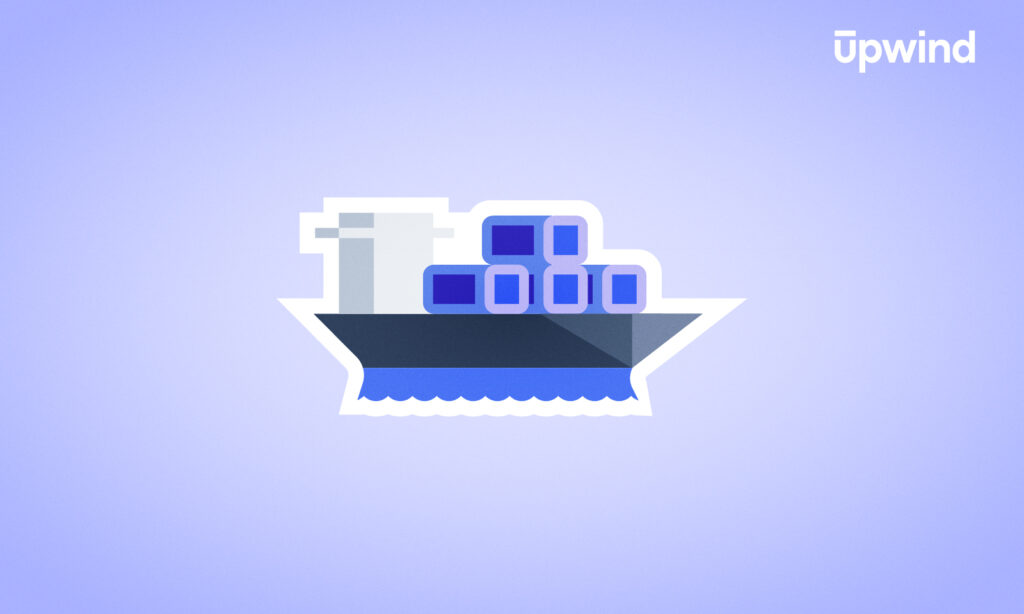
Today, 90% of companies see cloud technology as essential for digital transformation and market competitiveness — and most will adopt a multi-cloud strategy, with assets and applications spread across platforms. Gartner predicts that global public cloud services spending will reach $679 billion in 2024, and by 2028, the cloud will become a business necessity.
While these figures demonstrate the projected massive growth of the cloud market, cloud adoption will widen organizations’ attack surface and make them more vulnerable to cyber threats. Multiple clouds simply expand that threat and make it more difficult to secure. That could be the reason that by 2028, the global cloud security market is projected to reach $62.9 billion. But what is multi-cloud security?
In this article, we will discuss multi-cloud computing and explore its benefits, as well as the challenges related to securing multi-cloud architecture.
Multi-cloud Security with Upwind
Upwind offers runtime-powered security features so you get real-time threat detection, contextualized analysis, remediation, and root cause analysis that’s 10X faster than traditional methods — no matter where your cloud workloads are located.
What is Multi-Cloud?
Multi-cloud is a cloud computing model where a company leverages cloud computing services from more than one cloud provider. For example, a company utilizing Amazon Web Services (AWS) to host its website and Google Cloud for email storage is considered a multi-cloud user.
Multi-cloud environments are not limited to using services from public cloud providers only. A company could leverage cloud services from two or more public providers, two private providers, or a combination of public and private cloud providers. This flexibility allows businesses to create a customized cloud infrastructure that best meets their specific needs.
The ultimate goal of having a multi-cloud environment is to allow businesses to select the best cloud service for each type of workload. For instance, some cloud providers excel in website and file hosting, while others are more versatile in providing data analytics or artificial intelligence (AI) services. A multi-cloud approach enables companies to optimize performance, cost, and compliance requirements across different cloud platforms.
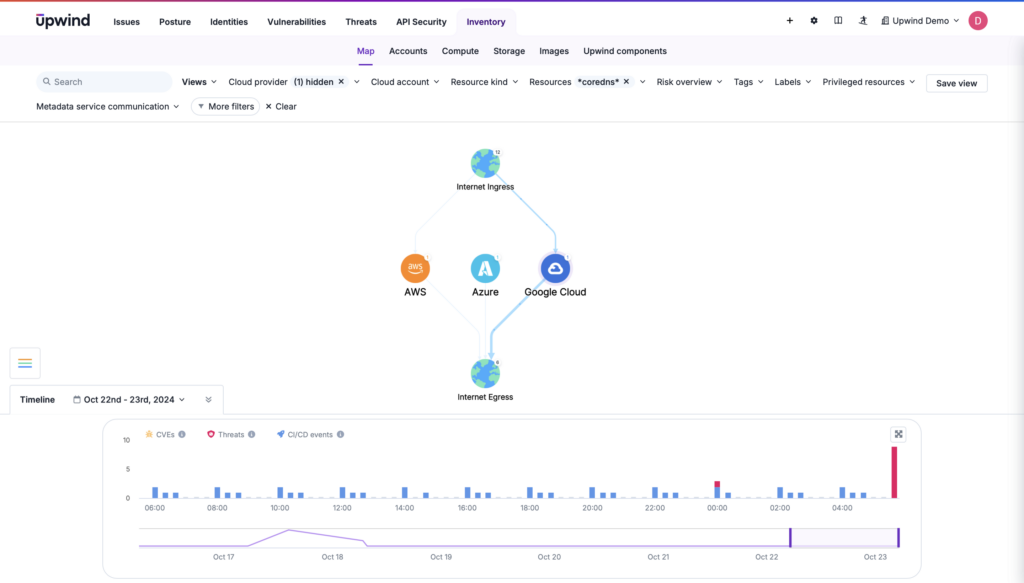
Multi-Cloud vs. Hybrid Cloud
Some users mix the two cloud architectures, thinking multi-cloud is the same as hybrid. However, the two are distinct. A hybrid cloud architecture utilizes public and private cloud services. This means a hybrid cloud user has at least one private cloud as a part of their cloud infrastructure (e.g., on-premises data centers or a service from a third-party provider) in addition to the public cloud, while multi-cloud users may not.
A good example of hybrid cloud architecture is common in large banks and financial institutions, which frequently adopt a hybrid cloud model. They maintain sensitive customer personal and financial data on their private cloud infrastructure for security and compliance reasons. At the same time, banks might use a public cloud provider like AWS or Google Cloud for their customer-facing mobile app and website to ensure scalability and availability during peak times.
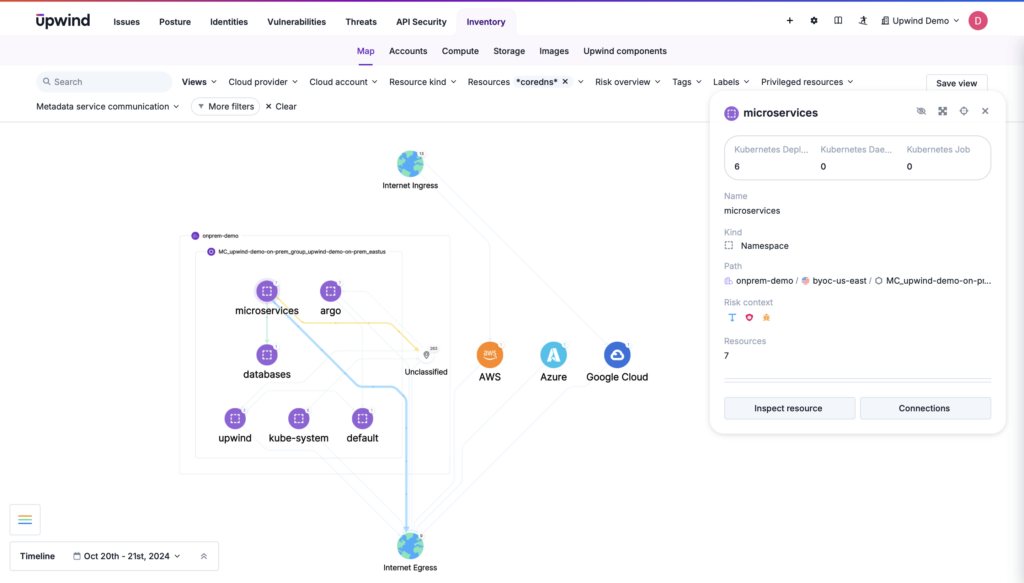
What are the Benefits of Having a Multi-Cloud Architecture?
Enterprises can achieve numerous advantages by adopting the multi-cloud model.
Here are the most prominent benefits:
Preventing Vendor Lock-In
Many companies stop innovating because they depend on a single technology to operate for a long time. Using services from multiple cloud providers helps companies avoid being tied to a single provider. For example, a cloud provider may suffer from downtime or technical issues. By utilizing services from more than one provider for each workload, a business can remain partially operational if one provider fails.
A notable example of losses associated with the vendor lock-in problem is the U.S. Department of Agriculture, which was forced to spend $112 million more on Microsoft Office than Google Workspace in 2021 to avoid paying even higher switching costs.
Keeping Cost Effective
With more than one cloud provider, a business can negotiate prices more effectively. Playing on the competition between cloud providers will allow your business to save significant costs. On the other hand, a public cloud service will enable you to scale up or down based on your business needs, resulting in substantial cost savings.
For instance, a study found that the U.S. government could save $750 million annually by purchasing IT services from multiple providers.
Accessing a Wide Range of Services
Not all cloud providers are equal. Some may excel in storage, while others have better computational power for analytics and AI operations. By leveraging services from diverse cloud providers, businesses will get the best service for their specific needs.
Accessing Innovative Technology
Cloud providers compete to attract more customers by incorporating innovative technology into their products and services. A multi-cloud infrastructure allows companies to test and utilize the latest technical advancements as they emerge. For example, many cloud providers now incorporate AI and Machine Learning (ML) technologies to support their services.
Achieving Better Compliance
Companies working in highly regulated environments, such as healthcare and financial sectors, must protect their customers’ personally identifiable information (PII) and financial information. By utilizing multi-cloud providers, a company can select the best one that suits its service and ensure compliance with rules.
For example, a company operating in the U.S. can utilize cloud services from an EU company to store its European customers’ data there. This effectively helps the company comply with rules while minimizing security risks associated with data breaches.
Increasing Availability and Resilience
Utilizing a multi-cloud architecture prevents having a single point of failure in your cloud infrastructure. For example, downtime or failure in one provider will not entirely cease all your work. This increases customer satisfaction and makes your business more resilient to unplanned downtime or other urgent issues like cyber attacks.
Defining Multi-Cloud Security
Now that we have a fair understanding of the multi-cloud model and its benefits to your business, here’s how organizations should secure their multi-cloud environments.
Multi-cloud security is defined as the set of security controls, policies, and strategies businesses should implement to protect their data and applications across multi-cloud architecture from all security threats. This comprehensive approach ensures that an organization’s digital assets remain secure, regardless of which cloud provider hosts them.
Multi-Cloud Security Challenges
Like in-house IT infrastructure, multi-cloud environments introduce many security challenges to organizations.
Here are the most prominent ones:
Cloud Threats
Businesses are increasingly worried about their ability to safeguard their multi-cloud environments. For instance, one report found that 70% of organizations are not confident in applying consistent security across on-premises and multi-cloud environments, which can be vulnerable to security breaches, from credential theft to API abuse. Consequently, 40% of recent data breaches have involved data stored across multiple environments.
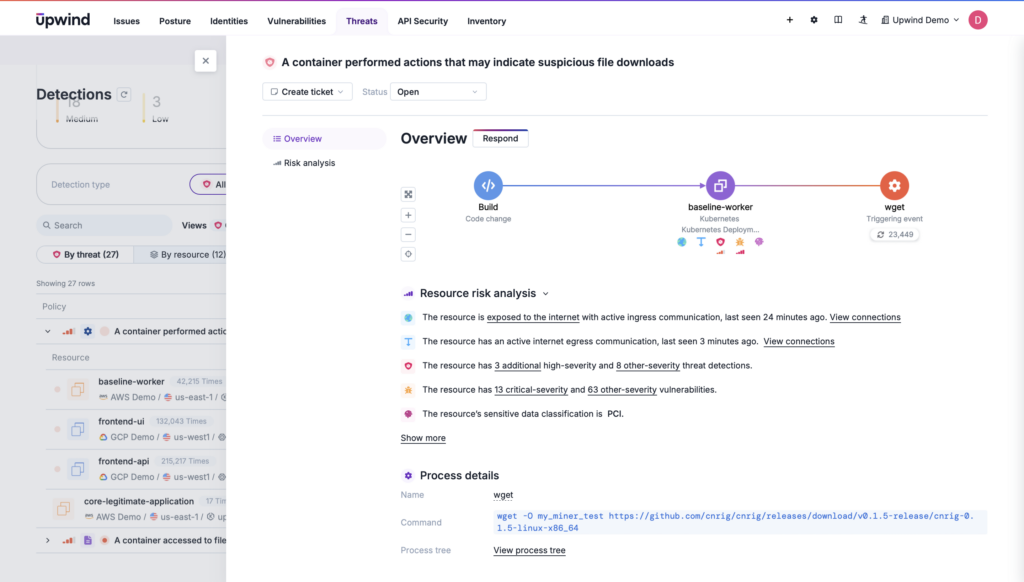
Traditional threats to multi-cloud environments include:
- Attacks from advanced persistence groups (APT)
- Malware – including ransomware and keyloggers to steal login credentials
- Botnets
- Distributed denial of service attack (DDOS)
- Zero-day exploits
- Malicious insiders
- Data breaches
- Phishing attacks
- Vulnerable APIs
On the other hand, in a multi-cloud ecosystem, security is a shared responsibility between the cloud provider and the client. Each cloud provider will have its own security controls and configurations. This further complicates the hardening of cloud applications with components spreading across different cloud providers, which ultimately increases the client attack surface.
Architecture complexity
Leveraging multi-cloud computing is a challenging task that requires careful planning and ongoing monitoring and maintenance.
For instance, multi-cloud complexity arises from managing and integrating multiple cloud services procured from different providers. Each cloud platform (e.g., AWS, Azure, Google Cloud, Oracle) has its tools, management interface, data formats, APIs, security controls, and configurations. This complicates the process of maintaining consistency, security, and performance across diverse cloud environments belonging to different companies.
For example, a retail store may utilize cloud services from three public cloud providers for each workload:
- AWS for hosting its e-commerce website
- Google Cloud for executing analytics using AI and ML technologies
- Microsoft Azure for Office 365 services
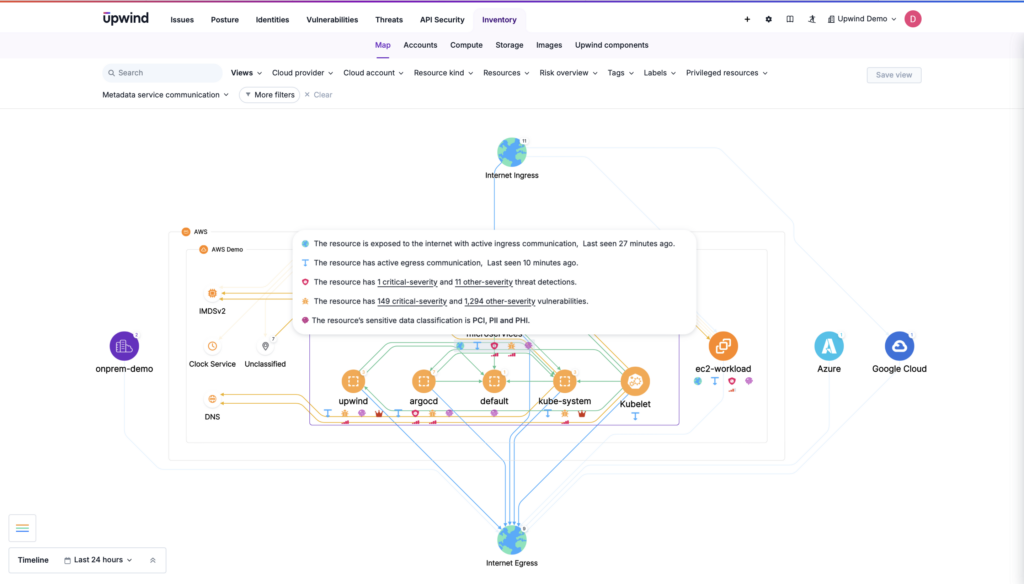
Making the tools existing in the three platforms interoperate together smoothly and exchanging data is a challenging task. This complexity does not stop with interoperability, as the company operating in multi-cloud also needs to ensure compliance with data protection regulations, such as GDPR, PCI DSS, and HIPAA, across different cloud environments.
Lack of Visibility
The lack of visibility is a major hurdle in multi-cloud environments. Security teams are often challenged to monitor all security controls, performance, and cloud resources across all cloud providers. The lack of visibility will result in an increased attack surface as we cannot have a holistic view of all connected devices and services to different cloud providers.
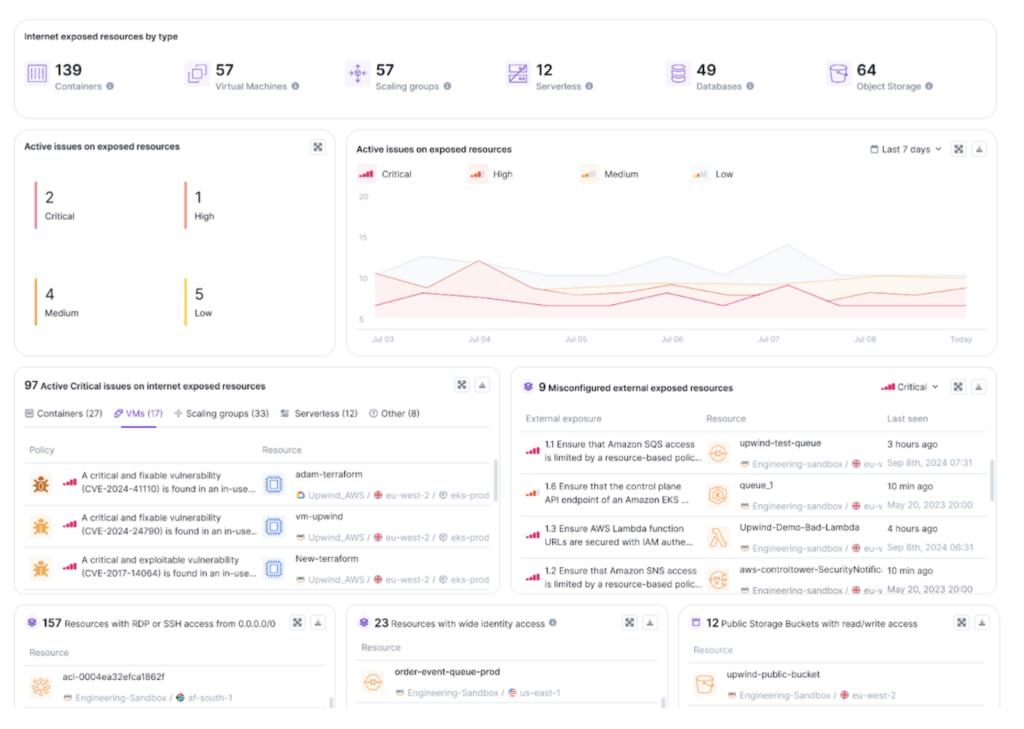
The lack of visibility in multi-cloud goes beyond security concerns, as it can also impact cost management, resource allocation, and overall operational efficiency of the cloud infrastructure. Without a unified view of all cloud resources, organizations will find it difficult to:
- Detect and respond to security threats promptly
- Optimize resource usage across the multi-cloud ecosystem
- Ensure compliance with the enforced regulatory requirements
- Troubleshoot performance issues
Increased Costs
One of the main reasons why organizations are migrating to the cloud is to cut costs. However, the complexity of multi-cloud environments can introduce hidden costs if not managed effectively. An important challenge is the lack of a unified dashboard to monitor all cloud resources across the multi-cloud ecosystem. This lack of visibility may lead to different activities that result in increasing IT expenses, such as:
- Allocating more resources than needed to perform some tasks
- Failure to use cloud resources, such as applications and systems, which can accumulate over time
- Users subscribing to cloud resources needlessly
- Cloud storage expanding needlessly over time due to large media files and datasets left after use
- The duplication of services by more than one provider
Configuration and Patch Management
Configuration management in a multi-cloud environment is a challenging task. For instance, each cloud provider has its own set of configuration tools (e.g., AWS CloudFormation, Azure Resource Manager, Google Cloud Deployment Manager). The learning curve for understanding how to use their features and best practices will take considerable time for system admins to master.
It is common for system admins to use Infrastructure as Code (IaC) templates to manage their IT infrastructure via code. While this simplifies the configuration management process when working in a single environment that utilizes specific hardware/software, in a multi-cloud environment where each provider has different hardware and software products, this process will still be difficult to achieve consistently.
Patch management is also challenging in such heterogeneous environments. Each cloud provider may have different patching schedules, methods, and tools. This complexity may lead to security vulnerabilities if patches are not applied uniformly across the entire multi-cloud ecosystem.
Governance and Compliance Issues
In multi-cloud ecosystems, data is scattered across different cloud providers. Those providers may operate in various geographical locations, which further complicates the regulatory compliance process.
This dispersed data in a multi-cloud ecosystem creates real challenges for organizations. This is especially true for those in highly regulated sectors such as healthcare, banking, and government. Each cloud provider may have different data handling practices, security measures, and compliance standards. This variation can make it difficult to consistently comply with regulations like GDPR, HIPAA, or PCI-DSS across all cloud environments.
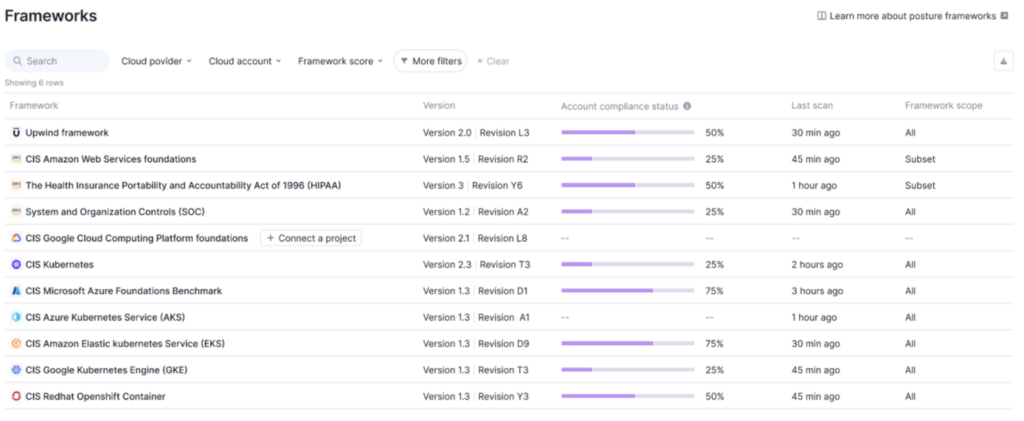
Data residency requirements are another challenge for organizations operating a multi-cloud. For instance, some regulations require that certain data types, such as customers’ personal and financial information, be stored within specific geographic regions (e.g., the GDPR requires EU citizens’ personal data to be stored within the EU). In a multi-cloud ecosystem, tracking and ensuring compliance with these requirements becomes increasingly challenging.
Multi-Cloud Security Best Practices
Despite the challenges associated with adopting a multi-cloud model, organizations can still utilize this model to serve their customers better by following these best practices that help them navigate these challenges.
Aim for Comprehensive Visibility
Use a cloud-native solution to aggregate data from different cloud providers and display it in a unified dashboard. This gives your business a holistic view of all interactions across its multi-cloud ecosystem. A comprehensive security platform like a CNAPP spans both cloud posture and runtime for a better overall view.
Use Automated Cloud Management Solutions
Invest in having automated security solutions to detect vulnerabilities before they can be exploited by threat actors. Some automated solutions for multi-cloud infrastructure include vulnerability scanning, patch management, and configuration check tools.
Unify Security Policies
It is critical to synchronize and implement the same security policies across all cloud environments, regardless of who the provider is. This allows your organization to have a consistent security posture. Using automated tools to enforce and implement these security policies across all cloud environments is also critical.
Manage Costs
Use a cost management solution that gives you a unified view of all cloud service subscriptions across multiple providers. This allows you to auto-scale cloud instances, servers, or hosting based on your current business workloads.
Compare Cloud Security Solutions: Point Tools vs. Unified Platforms
Security leaders juggling multi-cloud complexity can wind up with tool sprawl and little visibility to show for it. With a CSPM for posture, a CWPP for workloads, and custom glue to fill the gaps. Here’s what common setups include:
| Solution Type | Capabilities | Cloud Fit | Challenges |
| CSPM | Identify misconfigurations, map compliance | Strong for posture | Lacks runtime context |
| CWPP | Protect workloads (containers, VMs) | Strong per-cloud | Limited context across clouds |
| Security Information and Event Management (SIEM) + Custom Integrations | Centralize logs, alerts | Flexible | High integration cost, delayed response |
| CNAPP (e.g., Upwind) | Unify posture, runtime, identity, and response | Built for multi-cloud | Depends on depth of integration |
Typically, a CNAPP offers the most integration and gap coverage, as it does what multi-cloud organizations need most: consolidates visibility, policy, and response across a complex environment at scale.
Common Tool Combinations
A CSPM is often the first step teams take to gain visibility across the multi-cloud. It detects misconfigurations, tracks compliance drift, and provides guardrails for infrastructure setup. But it rarely works alone.
How does it fit real-world stacks?
Typically, teams combine tools. Here’s what it looks like.
CSPM + CWPP
Posture is handled by CSPM, while the CWPP takes charge of runtime. It’s effective, but siloed. And risk context can’t travel between layers.
CSPM + IaC Scanning
Policy shift-left happens in code, while CSPM makes sure post-deployment environments can’t drift without triggering alerts. This combination still requires visibility into runtime.
CSPM + SIEM
Misconfiguration detection is sent to the SIEM for alerting and ticketing. The system can mean plenty of false alarms and noise, which delays the team’s ability to respond.
CNAPP
Point solutions work. Until they don’t. Most teams start with CSPM, but they inevitably add layers to protect areas of the environment left undefended by each point tool. And that means disparate tools, dashboards, and understandings of what’s happening in the environment.
With multi-cloud environments, complexity is a key challenge. And at this point of growth, so are cost, correlation, context loss, and alert fatigue.
Teams outgrow their toolchain and may want to consolidate when:
- They’re managing multiple clouds and can’t enforce posture consistently in all their environments
- They use CWPP (or even Endpoint Detection and Response (EDR) tools but they’re still not covering containers or serverless functions at runtime.
- They’re using CSPM but miss lateral movement and identity-based risks
- They’re waiting too long for SIEM to correlate context after the fact
- They’re duplicating tool functions
- They’re spending the majority of their time integrating tools and managing alerts
Get Comprehensive Multi-Cloud Security with Upwind
Multi-cloud infrastructure is the reality of flexible, global organizations today. But that doesn’t mean multi-cloud security needs to continue challenging teams. With visibility into and across all clouds, teams can work in a dynamic environment with certainty that they’re meeting their compliance and security needs no matter where they work or where their workloads are running.
Want to get a better view of your multi-cloud environment? Let Upwind show you how. Schedule a demo today.
FAQ
What is the purpose of multi-cloud?
A multi-cloud model allows organizations to construct a cloud IT infrastructure across diverse platforms. By utilizing services from multiple cloud providers, your company becomes free from single-vendor constraints, enabling you to select the best optimal solutions that meet your business needs.
What is an example of a multi-cloud?
A multi-cloud model uses multiple public cloud services from more than one cloud provider within one architecture. An example of such a platform is an online retail store that leverages services from:
- AWS to host the e-commerce portal and associated mobile applications
- Azure for hosting Microsoft Office 365
- Google Cloud Platform for executing analytics tools powered by AI and ML technologies
Why do companies use multi-cloud?
Companies achieve numerous benefits by adopting a multi-cloud ecosystem, such as increased scalability and availability and reduced response latency for customers, as the multi-cloud platform would be scattered across different geographical locations.
How does Cloud Security Posture Management (CSPM) enhance multi-cloud security?
Misconfigurations aren’t a cloud-only thing, but they’re pretty common and more dangerous in the cloud because of default permissive settings in many cloud services, decentralized ownership, and high rates of change. Multi-cloud complexity complicates the risk even more.
In the cloud, misconfigurations are more likely to be exposed to the internet. With high-stakes consequences, organizations use CSPM to continuously identify misconfigurations and compliance gaps across cloud providers so their security controls are standardized no matter where their assets live.
What are the key differences between security approaches for single cloud vs. multi-cloud environments?
Single-cloud and multi-cloud environment security share core principles. But they differ in their complexity.
Single-cloud users can often employ native tools (like AWS Security Hub) to handle deep, integrated visibility. Enforcing policies and identifying risks is simpler. Teams can utilize cloud-native IAM and guardrails, eliminating the need to visit multiple control dashboards to view their assets and controls.
Multi-cloud users will need abstraction layers or third-party tools, such as CPSM or CNAPP, to normalize their telemetry across different platforms. They’ll need to create unified policy-as-code frameworks that work across IAM models and various services. Even so, their attack surface remains larger with more points of integration to manage.
How can organizations measure the ROI of their multi-cloud security investments?
Measure the ROI of multi-cloud security by tying outcomes to reduced risk, efficiency, and compliance, along with cost savings. Here are some metrics to consider:
- Reduction in security incidents
- Mean Time to Detect (MTTD) and Respond (MTTR)
- Audit and compliance pass rates
- Reduced tools sprawl and saved time
- Cost savings from automation
How should security teams address compliance across different cloud providers?
Jetting between services isn’t the way. Implement a centralized, policy-driven approach that abstracts away cloud-specific differences, putting teams in control.
Key strategies include compliance-as-code frameworks, using CSPM or CNAPP tools, centralizing audit logging to a SIEM, standardizing tagging, and regularly testing and validating controls.
What are the best practices for identity and access management in multi-cloud environments?
Centralization, consistent policy enforcement, and least privilege are key to IAM in multi-cloud environments. Consistent, auditable IAM policies reduce the risk of privilege escalation and credential misuse, and that’s especially important in multi-cloud environments that come with extra complexity.
Centralize identity with federation or SSO, monitor and rotate credentials, standardize roles across clouds, and use Just-in-Time (JIT) and multi-factor authentication (MFA) for sensitive tasks.
How can DevSecOps be implemented effectively in multi-cloud environments?
DevSecOps is all about embedding security throughout the development lifecycle. Start by setting the goal of integrating security into the CI/CD pipeline and standardizing controls across platforms, without slowing down development.
The steps you’ll need to take are:
- Adopting security-as-code, scanning infrastructure code before deployment
- Integrating security into the pipeline, embedding vulnerability scanning, secret detection, and policy checks
- Unifying logging and monitoring from all cloud sources
- Using cloud-agnostic tools, standardizing deployment and security, no matter where it happens
- Automating compliance and remediation, leveraging CSPM and IaC tools to flag violations and auto-remediate issues in all environments
What are the most common mistakes organizations make when securing multi-cloud infrastructures?
Some common missteps are:
- Relying on cloud-native tools without centralized oversight
- Inconsistent policies across providers
- Failing to automate configuration checks
- Ignoring identity sprawl
- Overlooking cross-cloud data flows
- Assuming compliance in one cloud applies to all cloud environments


